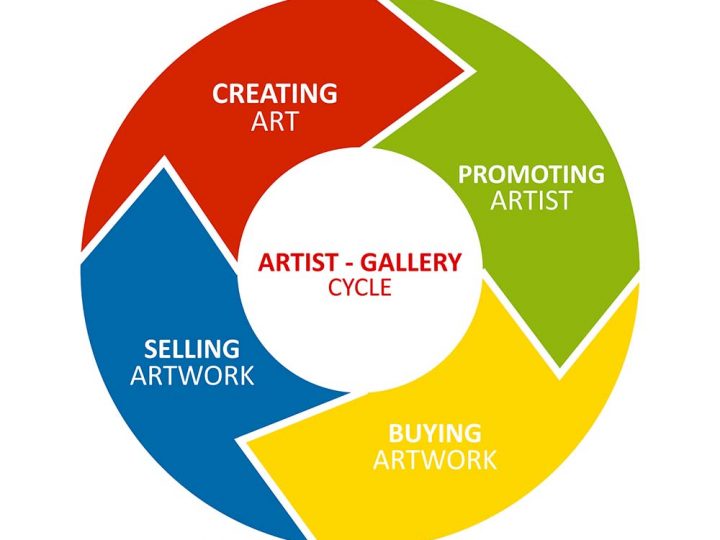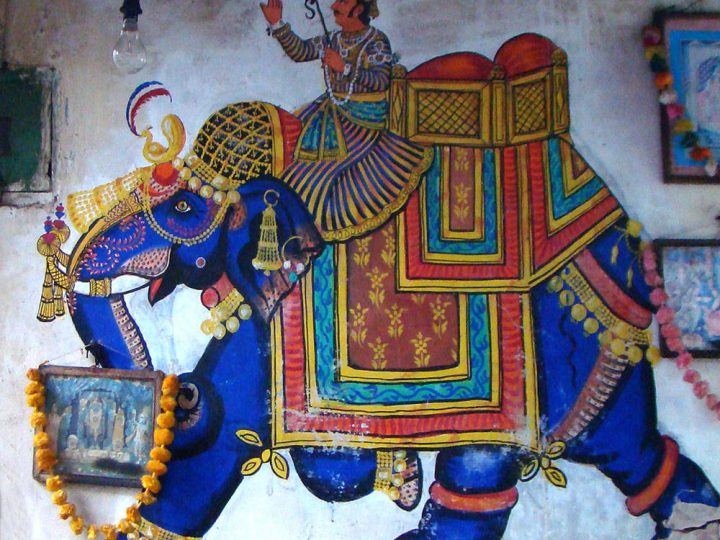The Significance of the Artist and Subject | The Legacy of Line and Form
In the vast and complex world of Indian contemporary art, K.G. Subramanyan (b.1924) stands as a towering figure, his legacy engraved in the timeless saga and technical excellence he left behind. An artist who not only revolutionized the landscape of Indian art but also nurtured generations of master artists through his invaluable teaching, Subramanyan’s work transcends mere visual pleasure—it is a celebration of story, emotion, and technique. With his deep roots in Indian folk traditions and modernist influences, his contributions to the world of art are unparalleled, making him one of the most respected legends of Indian art.
Storytelling Through Technique | Lines that Speak
Subramanyan’s genius lies not just in the subjects he chose to explore but in how he imbued them with life through the transformative power of lines. In his works, every line, curve, and angle is deliberate, a narrative thread that unravels the essence of his subject matter. His abstract works, like this etching, are where the artist’s masterful handling of lines becomes the storyteller. The bold, black lines on the page create movement, depth, and emotion, drawing the viewer into a world where forms are fragmented yet interconnected, and meaning is as fluid as the lines themselves. In this work, the still life—a vase, a jar, a chair—appears almost secondary to the lines that define them. These lines are more than just structural elements; they are the pulse of the artwork, communicating the story of a life lived through the act of etching.
The composition itself speaks volumes—divided into sections that invite the viewer to explore the interplay between geometry and form, the lines speak of depth and texture, of a moment captured yet constantly shifting. This ability to evoke a complex narrative purely through the technique of etching showcases Subramanyan’s remarkable skill. Each line seems to carry its own emotional weight, pulling the viewer deeper into the artwork’s rich, layered world.
The Aesthetic and Intellectual Value | A Masterpiece of Timeless Significance
This artwork, “Untitled,” outshines its visual appeal, showcasing Subramanyan’s innovative approach to etching. It’s more than a mere composition—it’s a masterclass in the subtleties of line work. Through his deliberate use of thick and thin, curvy and linear, dark and light lines, Subramanyan creates a dynamic rhythm that guides the viewer’s eye across the paper. The tonal contrast between light and dark further intensifies the emotional impact, making each line feel alive. This work isn’t just a representation of objects; it’s a dialogue between technique and meaning, where the lines themselves take center stage as the storytellers. Through this singular focus on line, Subramanyan crafts a tale that illustrates the vitality and energy of life itself, in a medium that thrives on precision and control.
For collectors and artists alike, this edition serves as a vital reference, a benchmark in understanding how technical expertise and emotional expression can be seamlessly woven together. It reminds us that art is not just about what is depicted but how it is brought to life, and how that life can transcend the material world to touch something more universal.
About the Artist | From Tradition to Transformation
Born in the lush landscapes of Kerala, K.G. Subramanyan’s journey was molded by his distinctive fusion of traditional Indian influences and modernist ideas. His defining turning point came when he joined Kala Bhavana at Visva-Bharati University in Santiniketan in 1944. Under the guidance of early modernists like Benode Behari Mukherjee, Nandalal Bose, and Ramkinkar Baij, Subramanyan honed his distinctive style, one that was deeply rooted in Indian folk art yet richly infused with the intellectual rigor of Cubism. This convergence of old and new allowed him to carve out a space for himself in the history of Indian contemporary art.
Subramanyan’s legacy is not confined to his own creations; his contributions as a teacher are equally significant. Having taught at the Maharaja Sayajirao University in Baroda from 1951 to 1959, and later at various institutions, he was instrumental in shaping the careers of many renowned artists. His role as a mentor is woven into the fabric of modern Indian art, influencing countless young minds to approach art with both passion and precision.
The accolades Subramanyan received in his lifetime—such as the Padma Bhushan in 2006 and the Padma Vibhushan in 2012—speak to the immense recognition he garnered for his contributions to the arts. A retrospective of his work held at the National Gallery of Modern Art in New Delhi in 2003 further strengthened his position as one of India’s foremost contemporary artists. His brilliance of various art forms, from painting to etching, left an indelible mark on the art world, making him not just an artist but a visionary who understood the power of technique to tell stories that transcend time and culture.
Photos and Text © Chaitya Dhanvi Shah






